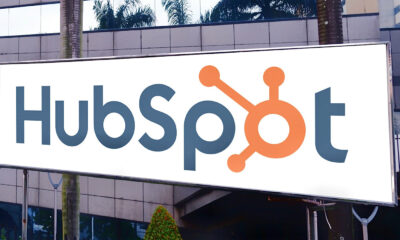EMAIL MARKETING
6 Email Marketing Threats Every Professional Should Know About

There are over 4.5 billion people using email marketing in the world. And nearly 80% of businesses use it as their primary customer acquisition and retention tool.
With so many companies and professionals utilizing this channel, it’s no surprise that hackers have their eyes on it too.
These scammers use unsolicited emails, malicious links, and other ways to breach your systems and steal your personal information, files, and other important resources.
Hence, you need to take proactive steps to ensure you don’t fall victim to their ill-doings.
In this post, we’ll share the six most common email marketing threats professionals in every industry, niche, and role face daily.
We’ll also share useful prevention tips or solutions for each threat.
The Most Dangerous Email Security Threats Professionals Face
1. Spam
Let’s begin with the oldest and most annoying threat – spam. In short, spam refers to unwanted or unsolicited messages advertising different products and services – most of which are fake. Some also contain Trojans and malware in the form of links or attachments.
These emails flood and clog mailboxes with junk that serves no purpose to professionals and simply wastes their time or impacts their productivity. Here are some interesting stats to give you an idea of how big of a threat spam is:
- According to Statista, nearly 60% of email marketing traffic volume is spam;
- Mailmodo says that one spam email produces nearly 0.03g of carbon monoxide. In 2021, nearly 4.5 tons of CO2 was released just because of spam;
- Less than 25% of spam messages are legit. Around 73% are phishing emails, while 2.5% are scams and fraud.
Unfortunately, there’s no way to eliminate spam from email marketing. However, you can protect yourself by:
- Reporting, blocking, and deleting suspicious emails;
- Using a third-party email filter, such as SpamTitan, Xeams, Spambrella, etc.
2. Spoofs
Spoofing is among the most popular email marketing threats taking the business market by storm. In short, spoofs are forgery emails used by scammers and criminals to mimic real brands. They prompt recipients to share their personal information or make a transaction on fake landing pages linked within the emails.
Here are some interesting stats related to spoofs:
Unfortunately, the only way to prevent theft or loss by spoofing emails is through due diligence. This includes simple practices, such as:
- Sticking to trusted brands for products and services;
- Identifying fake links by hovering your cursor over the link to display the real URL;
- Contacting businesses on their official numbers to verify the content of a branded email.
3. Botnet and DDoS Attacks
Distributed Denial of Service (DDoS) typically involves using botnets connected to the internet to send out massive spam and phishing campaigns that can overload systems. Here are some interesting stats related to DDoS attacks via email:
- According to Secure List, US businesses alone faced over 78,000 DDoS attacks in Q2 2022;
- Comparitech states that around 70% of businesses face 20-50 DDoS attacks every month.
DDoS attacks via email typically occur when attackers get a hold of IP addresses. Therefore, one of the best ways to prevent them is by using free VPN software, which allows you to browse and use emails anonymously.
4. Phishing
Phishing is one of the oldest email marketing threats professionals have faced since the early 2000s. It employs social engineering and other techniques to trick employees into sharing personal information that could result in their money, data, or identities being stolen. Here are some interesting stats related to phishing:
- According to a 2021 Tessian study, employees receive around 14 phishing emails on average every year;
- Cisco’s 2021 Cybersecurity Trends Report claims that at least one employee clicks a phishing link in nearly 86% of organizations;
- According to Verizon, nearly 96% of phishing attacks happen through email.
Phishing attacks can be avoided if you know how to identify and prevent them. For instance, most attackers use unfamiliar links or make offers that are just too good to be true. Recommended prevention practices include:
- Not clicking on strange links or popups;
- Not sharing your information on sites that aren’t HTTPS secure;
- Regularly installing security patches and upgrades.
5. Business Email Compromise (BEC)
BEC attacks have grown exponentially since the start of COVID-19 due to the rise of remote work. These attacks are similar to phishing. However, the only motive is to steal money from businesses. BEC attackers impersonate high-ranking professionals and instruct employees to fake accounts.
Here are some interesting stats related to BEC attacks:
- According to Id Agent, nearly 77% of businesses faced BEC attacks in 2021;
- Nearly 80% of BEC attacks occurred due to criminals impersonating high authority figures, such as supervisors, attorneys, CEOs, or vendors.
- The FBI reported around $2.4 billion of theft in 2021 by BEC attacks.
BEC attacks can be prevented in many ways. The simplest way is by confirming the request with the recipient via another channel, such as a call. Secondly, you should also check the email address carefully for errors.
However, the best ways to prevent BEC attacks are through multi-factor authentication and using paid work email accounts.
6. Malware
Finally, the last email marketing threat on our list is malware. Malware is sent for one core purpose – to compromise business operations. Hackers trick people into downloading ransomware, adware, and spyware by prompting them to click on links, popups, and email attachments.
Here are some interesting stats related to malware:
- According to Phishing Box, nearly 46% of businesses and professionals receive malware via email;
- According to Cleard In, around one in every hundred opened emails contain malware.
Every business and professional needs to have powerful anti-malware software running whenever they use their devices. It can help identify and eliminate threats proactively. As far as prevention goes, it’s all about caution and due diligence.
As an email user, you need to pay close attention to suspicious attachments, strange links, spelling issues, and unrealistic offers.
Wrapping Up
Now that you’re aware of the six most dangerous email marketing threats professionals face, you can take more proactive steps in maximizing protection. Email marketing will continue to dominate the business world.
Hence, it’s up to you to educate yourself regarding cybersecurity threats and how to prevent or combat them.









![Holistic Marketing Strategies That Drive Revenue [SaaS Case Study] Holistic Marketing Strategies That Drive Revenue [SaaS Case Study]](https://articles.entireweb.com/wp-content/uploads/2024/09/Holistic-Marketing-Strategies-That-Drive-Revenue-SaaS-Case-Study-400x240.png)
![Holistic Marketing Strategies That Drive Revenue [SaaS Case Study] Holistic Marketing Strategies That Drive Revenue [SaaS Case Study]](https://articles.entireweb.com/wp-content/uploads/2024/09/Holistic-Marketing-Strategies-That-Drive-Revenue-SaaS-Case-Study-80x80.png)


You must be logged in to post a comment Login